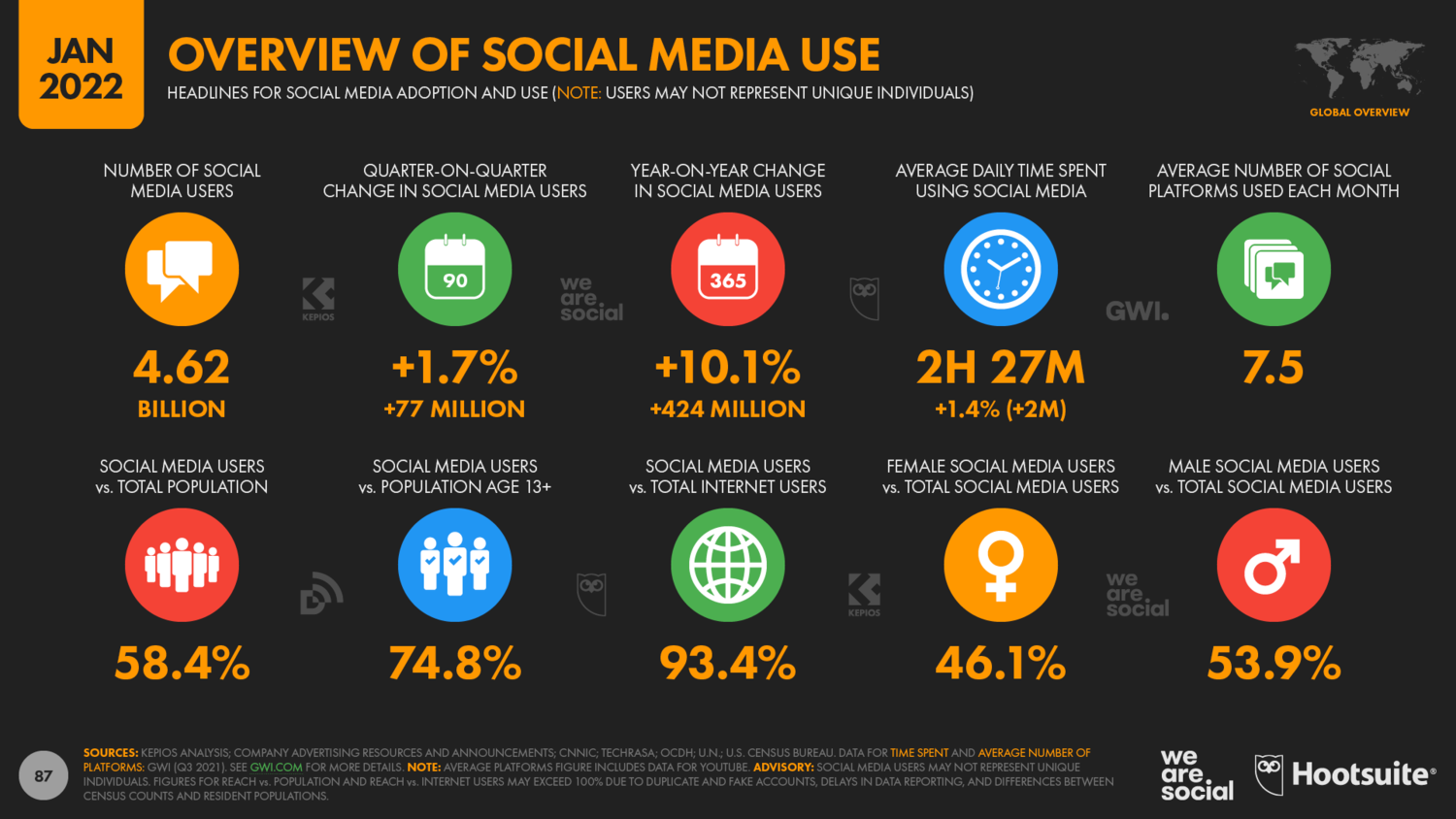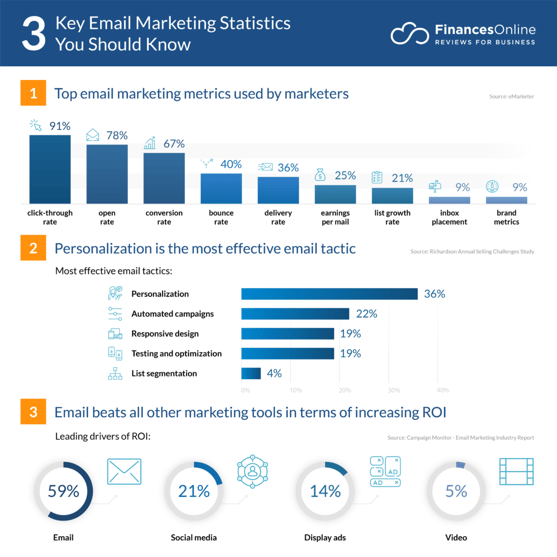Much like your Netflix options, when it comes to your paid media strategy there's a bunch to consider, all of which can leave you in a position of not falling on a decision at all if you're not asking the right questions. What platforms do you advertise on? How do you target your adverts? What content should your ads consist of? Why did the chicken cross the road? These are all important questions that you need to ask yourself if you want to create a digital advertising campaign that will bring in value.
In this article, we take a look at the various online advertising options out there, the pros and cons, and which one is best suited to your business.
To start, let's take a quick look at online advertising versus traditional advertising.
Online advertising versus traditional advertising
It’s important to understand the difference between online advertising and traditional advertising - it helps you make an informed decision about the type of advert that you want to create.
Traditional advertising includes mediums such as print (newspapers, magazines, flyers, etc.), TV, radio, and direct mail. These mediums are considered to be outbound marketing methods, as they involve interrupting consumers with your message, rather than them seeking you out.
Online advertising is most often classified as inbound marketing, as it allows consumers to easily find your adverts when they are already interested in the product or service that you are offering. This type of marketing is often more effective than traditional outbound methods, as you are targeting consumers who are already interested in what you have to say.
Here are a few benefits of online advertising versus traditional advertising:
- More cost-effective: Online advertising > Traditional advertising cost-wise any day. For online ads, you have the option of paying for people who click on your ad, or you can set them to a specific audience cap. This means you can be far more deliberate with your advertising spend, as opposed to paying hefty TV or radio advertising fees.
- Greater reach: With online advertising, you can target consumers all over the world with just a few clicks, versus radio and TV where it's likely strictly National.
- More flexible: Online advertising offers greater flexibility than traditional methods as you can switch up your ads fairly easily - good luck having that efficiency with a billboard ad!
- Easier to track results: It’s easier to track the results of your online advertising campaigns than it is to track the results of traditional advertising campaigns. The power of real-time data means you can fine-tune your campaign efforts, helping you drive your ROI.
- You can target specific audiences: With online advertising, you can target specific audiences with laser precision. If you for example are a retail store in a specific suburb in Sydney, you can geotarget your advert to that specific audience.
There's a bunch of different online ad platforms you can use to promote your business. The most popular platforms are Google search ads, social media ads, display advertising, Google Display Network and email marketing. Let’s take a look at a few of these, starting with a fan favourite, Google ads.
Google Ads
Google Ads is the most popular online advertising platform with a whopping 3 million advertisers using the platform! Google Search Ads are incredibly effective in reaching users when they Google search for terms that are related to your business.
The pros of Google ads
Google Ads is the most popular advertising platform with good merit. There are many benefits, some of which include:
- Cost-effective: You only pay when someone clicks on your ad (pay-per-click advertising), so you can be deliberate with advertising costs, helping that oh-so-important bottom line with your average spend.
- Greater reach: Google Ads has a global reach, meaning you can hit the eyes of your fans-to-be in Sydney, or the eyes of an Eskimo in Alaska.
- Flexibility: You can easily change your adverts if you want to try something new.
- Tracking of results: It’s easy to track the results of your campaigns so you can optimise your efforts and lose what's no longer serving you, helping you balance your average cost per campaign.
The cons of Google ads
While the pros are great, there are always 2 sides to a coin.
- You need to have a good understanding of how the platform works: Google Ads is a detailed platform, and you need to have a good understanding of how it works in order to be successful. If you're after some support, reach out to Neighbourhood - we've been around the block a bit with this kinda stuff.
- There’s a lot of competition: Because Google Ads is so popular, there’s a lot of competition, which can make it difficult to stand out from the crowd. That's why it's so important that you aren't just dumping money into your ads, but curating neat content backed by strategy.
- You need to be strategic: As just mentioned, you need to be pretty strategic with your campaigns in order to be successful, especially with your bidding strategy so you're hitting the right keywords and target audience. It's all about balance for producing quality ads.
- It can be expensive: If you don’t know what you’re doing, you can waste a lot of money on Google Ads. Make sure you do your research before diving into the deep end.

For those playing at home, here are a few stats on Google ads that you should know:
- Over 80% of businesses globally trust Google ads as part of their paid advertising campaigns
- When it comes to what Google recommends capping a daily budget at, this figure is $50
- People are 4 times more likely to click on a Google ad than any other advertisement platform
- 7.94% is the average Google ads click-through-rate for adverts that are placed in the first position
Now, let's compare Google ads to social media ads...
Google ads vs Facebook ads
Social media ads are another popular way to reach your target audience. As the name suggests, social media ads are ads that are shown on social media platforms like Facebook, Twitter, Instagram, and LinkedIn.
Social media platforms have a wealth of data on their users which they use to target ads. This means that you can be super specific with your targeting, and you’re likely to reach users who are interested in what you have to say.
One of the key differences between Google ads and social media ads is that social media ads are more visually focused. They're a great way of building brand awareness and using creative, out-of-the-box content to gain the eyes of the masses.
There are a few pros and cons when it comes to social media ads.
The pros of social media ads
There's a handful too good to ignore...
- As mentioned, you can target a specific audience: Social media platforms have a wealth of data on their users which you can use to target your ads.
- Ads are less intrusive: Social media ads appear in the middle of other content that users have liked or followed in the past meaning it's not sticking out like a sore thumb.
- They're great for building brand awareness: Social media ads are more likely to be seen and remembered than ads on other platforms as it offers a variety of content to engage with - an example is short, informative video ads.
- They’re relatively cheap: Social media ads are generally cheaper than other forms of online advertising. This doesn't mean they should be your only means of advertising though.
- Ads can be shared: Social media ads are more likely to be shared than other forms of online advertising.
The cons of social media ads
There are also a few things you need to be aware of with social media ads.
- You need to have a good understanding of the platform you’re using: As with Google Ads, you've got a toolkit at hand that you need to have some knowledge on utilising well to see a positive ROI.
- They can be time-consuming: Social media ads can be time-consuming to create - as a copywriter myself, there's a lot of forethought required to make social content engaging
- Frequency can be an issue: Social media ads can sometimes be shown too frequently, which can lead to users becoming blind to them. In general, there's an oversaturation of social media ads, but done right, they can stand out (in a good way).
- You need to have a good budget: Now, it isn't the be-all-end-all, but to offer variety and find what works best, you should try and have a good budget as you’ll need to create multiple ads and test different targeting options.
- You need to be creative: As we mentioned above, social media ads are more visually focused, so you need to be creative in order to make your ad stand out.
Some social media ads stats you can't ignore
- There were more than 3.96 billion social media users in January 2022
- 7 - that's the number of social media networks that the average person uses
- 95 - that's how many minutes on average adults use social media each day
- The fastest-growing social media network is TikTok, with a 105% user growth rate in the USA over the past 2 years - video ads have been pumpin'!

Let's compare Google ads and social media ads with two other types of digital advertising.
Email marketing
You've probably guessed it, but email marketing is a form of online marketing that involves sending emails to customers and potential customers. The aim of email marketing is to build relationships with customers and leads to promote your products or services.
Email marketing is great to when looking to reach a large audience all while saving some cash in the meantime (it's really cost-effective).
Though, as this is an article on Google Ads versus other means of marketing, excuse the bias here but these are some potential drawbacks of email marketing...
Why email marketing may not be as effective as Google ads
Like a parent has a preferred child, we have a preference for Google ads over email marketing. Why? Well:
- You need a large database: In order for email marketing to be effective, you need a large database of customers and potential customers - though, this doesn't mean you shouldn't implement a savvy email strategy. You've gotta start somewhere.
- You need to be creative: Email marketing can be quite creative, but you need to be able to stand out from the crowd.
- You need to be careful with spam: If you're pushing out emails in a relentless pursuit to just achieve ONE campaign goal, you could find yourself considered as spam. This can damage your reputation and it’s something you need to avoid.
- Email open rates: If you aren't nailing your subject lines and reaching out to your audience at the appropriate times, your email open rate may looking pretty poor. Neighbourhood have a bunch of articles on creating solid email campaigns - definitely check em' out!
- With Google ads, consumers are being served an advert at a particular time when they have a need for a product or service. With email marketing, it will be sent to anyone on your database, regardless of whether they need it or not.
- Email marketing can be quite intrusive: If you’re not careful, your email marketing campaign can come across as being too intrusive. This is something you need to avoid as it will only annoy potential customers.

Choosing the right digital platform to advertise your business
As you can see, there are a few things you need to take into account when choosing the right digital platform to advertise your business. Google Ads are often the most effective form of online advertising and the most popular.
Whichever one you choose, you need to consider your budget, your target audience, and your objectives before you make a decision.
Which advertising platform are you using to promote your business?


